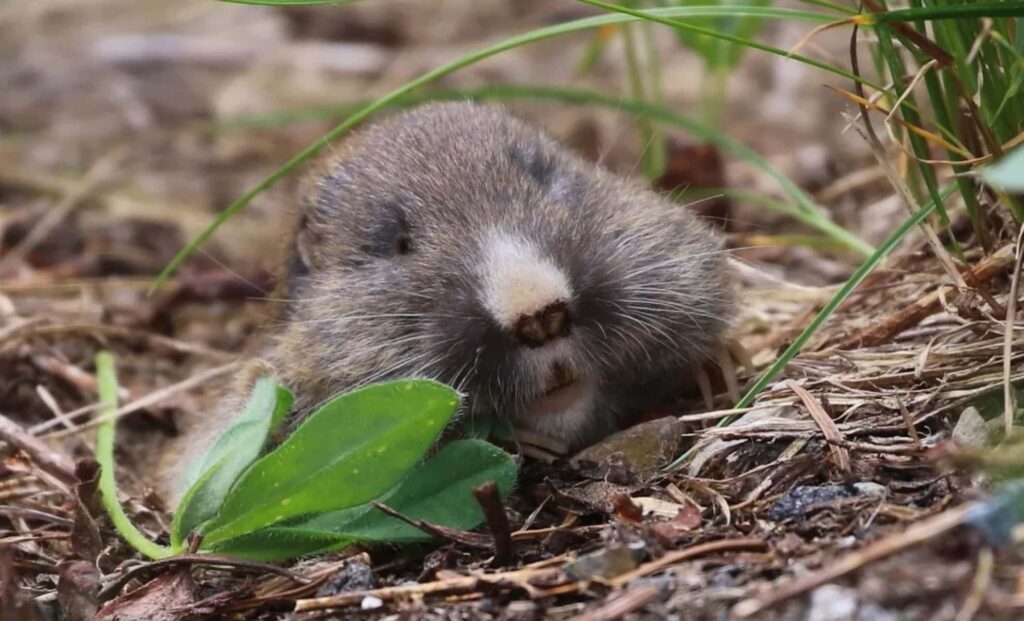In the aftermath of the 1980 eruption of Mount St. Helens, scientists faced a stark reality: the land was barren. Volcanic ash covered the area, and much of the vegetation had been wiped out. The recovery of the surrounding ecosystem would take years, if not decades. But in a strange twist, an experiment with an unlikely participant—the humble gopher—would show the world just how resilient nature can be.
The Curious Experiment: Gophers in the Crater
Shortly after the eruption, the surrounding land around Mount St. Helens was left nearly lifeless. A group of researchers, led by microbiologist Michael Allen from the University of California Riverside, decided to test an unconventional idea: could gophers help kickstart the recovery of the barren landscape? These creatures, often seen as pests, were thought to be ideal for the job. Their digging habits might bring deeper, more fertile soil to the surface, where it could interact with the existing microbes and fungi, which were crucial for ecosystem recovery.

In 1982, two years after the eruption, a handful of local gophers were placed into enclosed test plots on the mountain. They spent just 24 hours in the area, but the experiment would have long-lasting effects that no one could have predicted. The gophers’ digging disturbed the pumice-laden soil, allowing microorganisms to thrive and reintroduce life to the surface. This was a simple act, but it planted the seeds for something much bigger.
A Legacy That Outlasted the Gophers
Though their time on the mountain was brief, the gophers’ impact was profound. Six years after the experiment, researchers returned to the area and discovered something astonishing. Where the gophers had worked, over 40,000 plants had taken root, creating a thriving ecosystem in what had once been a desolate landscape. The surrounding land, untouched by the gophers’ efforts, remained largely barren. The scientists were not only surprised by the immediate results but also by the long-term benefits.


Years later, the research team returned to the site, and their findings were even more remarkable. They discovered that areas where the gophers had dug harbored a far more diverse microbial community than the areas around them. In fact, the bacterial and fungal communities in these plots were more diverse than those found in the nearby old-growth forests. It became clear that these small animals had played a critical role in the ecosystem’s recovery—far beyond the researchers’ original expectations.
The Role of Fungi in the Rebirth of the Forest
While the gophers were the experiment’s surprise stars, it was the fungi beneath the soil that ultimately played the most significant role in the area’s recovery. Scientists were initially concerned that the destruction of nearby forests, particularly the loss of pine and spruce trees, would mean that the area would take generations to recover. The ash from the eruption had coated the trees’ needles, causing them to fall off, further hampering the recovery process.


But the researchers found that the fungi present in the soil had helped to revitalize the forest in a much faster time frame than anticipated. These mycorrhizal fungi, which form symbiotic relationships with plant roots, were able to quickly recycle nutrients from the fallen tree needles, fueling rapid tree regrowth. This process allowed the forest to recover quickly, much faster than scientists had expected.
The stark contrast was evident when comparing areas where fungi had been active to areas where no such activity had occurred. The difference in plant and tree growth was striking, further underscoring the importance of fungi in the restoration of the forest.
Forty Years Later: A Continuing Story of Resilience
In a follow-up study published in 2024, the research team revisited the site to assess the long-term effects of the experiment. They found that even after four decades, the areas where gophers had dug were still home to diverse microbial communities, continuing to support the ecosystem long after the animals had left. It was a stunning reminder of nature’s resilience and its ability to adapt and recover, even in the wake of a catastrophic event like the eruption of Mount St. Helens.
What makes this study particularly remarkable is not just the role of the gophers or fungi, but the way it highlights how interconnected ecosystems are. The gophers, while small in size, played a crucial part in creating the conditions for recovery. They didn’t just move soil; they activated the microbial life that would allow plants to grow and thrive. It’s a perfect example of how every part of an ecosystem—no matter how small—has a role to play in ensuring survival and recovery.

